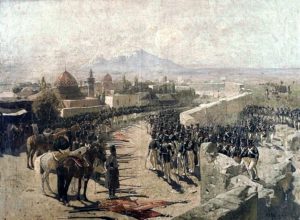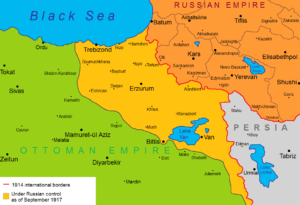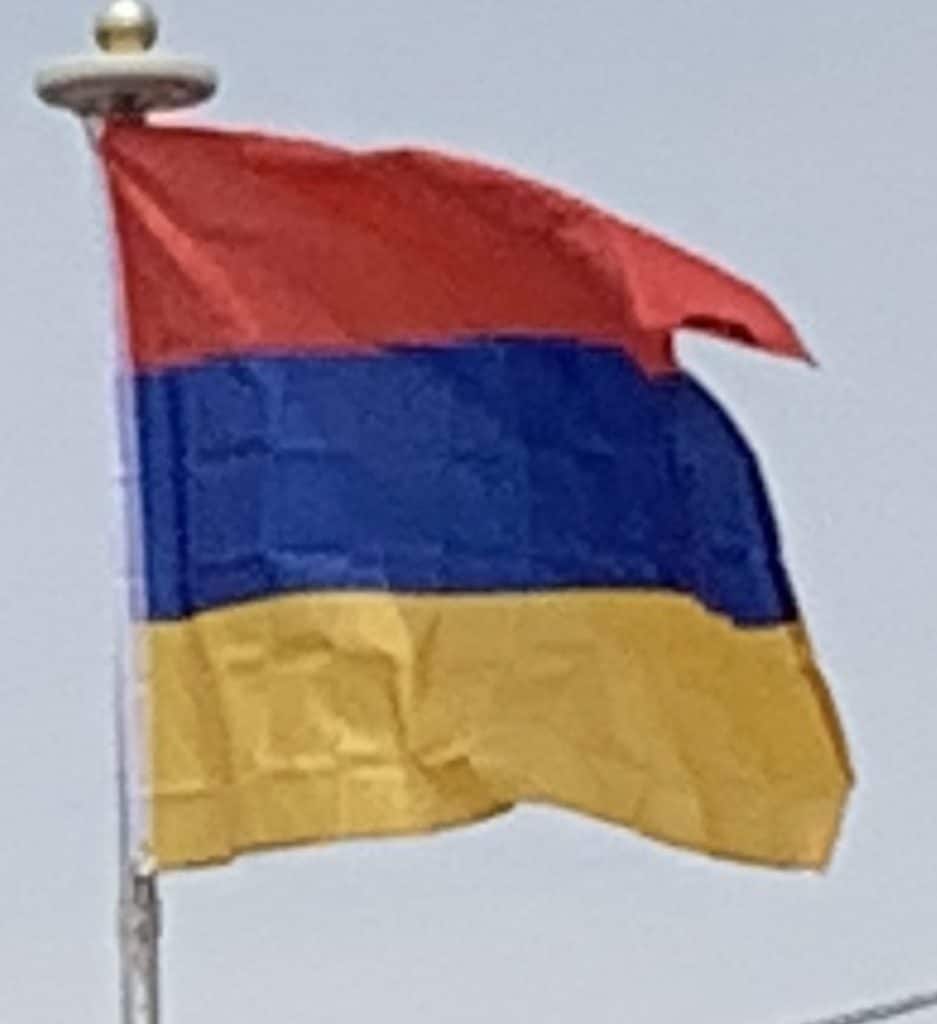
While Western Armenia still remained under Ottoman rule, the Armenians were granted considerable autonomy within their own enclaves and lived in relative harmony with other groups in the empire (including the ruling Turks). However, as Christians under a strict Muslim social structure, Armenians faced pervasive discrimination. When they began pushing for more rights within the Ottoman Empire, Sultan Abdul Hamid II, in response, organised state-sponsored massacres against the Armenians between 1894 and 1896, resulting in an estimated death toll of 80,000 to 300,000 people. The Hamidian massacres, as they came to be known, gave Hamid international infamy as the “Red Sultan” or “Bloody Sultan”. This period is known as Russian Armenia.
During the 1890s, the Armenian Revolutionary Federation, commonly known as Dashnaktsutyun, became active within the Ottoman Empire with the aim of unifying the various small groups in the empire that were advocating for reform and defending Armenian villages from massacres that were widespread in some of the Armenian-populated areas of the empire. Dashnaktsutyun members also formed Armenian fedayi groups that defended Armenian civilians through armed resistance. The Dashnaks also worked for the wider goal of creating a “free, independent and unified” Armenia, although they sometimes set aside this goal in favour of a more realistic approach, such as advocating autonomy.
The Ottoman Empire began to collapse, and in 1908, the Young Turk Revolution overthrew the government of Sultan Hamid. In April 1909, the Adana massacre occurred in the Adana Vilayet of the Ottoman Empire resulting in the deaths of as many as 20,000–30,000 Armenians. The Armenians living in the empire hoped that the Committee of Union and Progress would change their second-class status. The Armenian reform package (1914) was presented as a solution by appointing an inspector general over Armenian issues.

World War I and the Armenian Genocide:
The outbreak of World War I led to confrontation between the Ottoman Empire and the Russian Empire in the Caucasus and Persian Campaigns. The new government in Istanbul began to look on the Armenians with distrust and suspicion, because the Imperial Russian Army contained a contingent of Armenian volunteers. On 24 April 1915, Armenian intellectuals were arrested by Ottoman authorities and, with the Tehcir Law (29 May 1915), eventually a large proportion of Armenians living in Anatolia perished in what has become known as the Armenian Genocide.
The genocide was implemented in two phases: the wholesale killing of the able-bodied male population through massacre and subjection of army conscripts to forced labor, followed by the deportation of women, children, the elderly and infirm on death marches leading to the Syrian desert. Driven forward by military escorts, the deportees were deprived of food and water and subjected to periodic robbery, rape, and massacre. There was local Armenian resistance in the region, developed against the activities of the Ottoman Empire. The events of 1915 to 1917 are regarded by Armenians and the vast majority of Western historians to have been state-sponsored mass killings, or genocide.
